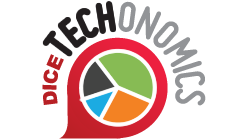“Data scientist” regularly dominates lists of the best jobs in America, and with good reason. The position (usually) pays extraordinarily well, and it’s increasingly vital to many businesses. Money is great, but there’s nothing like the satisfaction of knowing that a company
depends on your skills in order to exist and grow. Stratospheric salaries for data scientists suggest that demand is vastly outstripping supply; last year, a report from
consulting firm McKinsey & Co. suggested a national shortage of as many as 190,000 people with “deep analytical skills” by 2018. But that being said, those interested in landing the data-science position of their dreams will need to present a résumé that effectively highlights their experience and skills; companies really want talent, but they’re keen to find people who can actually handle the task. Let’s break down this “standard”
data scientist résumé (courtesy of Dice’s databank of
sample résumés) and see what it takes to make a good one. Starting from the top, with the summary section:
Professional Profile A former Ruby and Java programmer with newly acquired skills, an insatiable intellectual curiosity, and the ability to mine hidden gems located within large sets of structured, semi-structured and unstructured data. Able to leverage a heavy dose of mathematics and applied statistics with visualization and a healthy sense of exploration.
Now, you don’t necessarily need a summary section—in fact, some résumé experts argue against it, on the grounds that you can use that valuable space to include more experience and skills. They’ll tell you that
your cover letter offers plenty of space for an explanation of what makes you unique. But if you absolutely must include one, a.) keep it short, and b.) emphasize your skills and experience, just like in this sample résumé. Which brings us to the next section:
Education Grad Certificate, Data Mining University of California, San Diego (2009) Relevant Courses: Data Mining Methods and Techniques, Data Preparation for Data Mining and Advanced Methods and Applications B.S. Computer Science San Francisco State University (2002)
This is pretty straightforward: list your qualifications. This data scientist résumé does a great job of breaking out relevant skills on a separate line, which is definitely something you should consider if you feel that your degrees don’t quite convey the depth of your data-science education.
Skills and Tools ■NoSQL data stores (Cassandra, MongoDB) ■Hadoop, MySQL, Big Table, MapReduce, SAS ■Large-scale, distributed systems design and development ■Scaling, performance and scheduling and ETL techniques ■C, C++, Java, Ruby on Rails
Although our sample résumé includes a lengthy “core competencies” section, you can regard such a thing as optional; if you have a lot of relevant experience, you might want to restrict the section related to your skills and abilities to a (relatively brief) set of bullet-points. First and foremost, you should put down skills such as Hadoop and MapReduce, as well as any relevant programming languages you know. While many data scientists choose to devote their space to “hard” skills and programs, you may gain a slight advantage by reserving a bullet-point or two for your “soft skills.” Being able to communicate with team members, negotiate for resources, and explain your results to others are all key parts of a data scientist’s daily workflow. Next comes the core section of the data scientist résumé: Experience. Here’s a good (although long) example of a typical job breakdown:
Cool Jeans San Francisco, CA Data Analyst 2012-present Work closely with various teams across the company to identify and solve business challenges utilizing large structured, semi-structured, and unstructured data in a distributed processing environment. Develop a new pricing strategy for Total Jeans that boosted margins by 2 percent and analyzed customer buying habits which correctly predicted the resurgence of dark blue denim giving us a jump on the competition. ■ Analyze large datasets to provide strategic direction to the company. ■ Perform quantitative analysis of product sales trends to recommend pricing decisions. ■ Conduct cost and benefit analysis on new ideas. ■ Scrutinize and track customer behavior to identify trends and unmet needs. ■ Develop statistical models to forecast inventory and procurement cycles. ■ Assist in developing internal tools for data analysis.
For starters, you probably won’t have enough space for a summary this long (on this sample résumé, there are only two jobs, which certainly frees up room). That’s not a bad thing; by keeping summaries short, and bullet-points relatively limited, you can better convey your impact. Let’s rewrite the above experience in a more succinct way:
Used analysis to develop a new pricing strategy for Total Jeans that boosted margins by 2 percent. Correctly predicted the resurgence of dark blue denim, giving us a jump on the competition. ■ Analyze large datasets to provide strategic direction to the company, leading to a revenue boost of 10 percent. ■ Perform quantitative analysis of product sales trends to recommend pricing decisions, leading to a sales increase of 30 percent. ■ Scrutinize and track customer behavior to identify trends and unmet needs, creating three new lines of business.
See what we did there? Every sentence shows the results obtained—and in the end, results are primarily what your prospective employer cares about.


